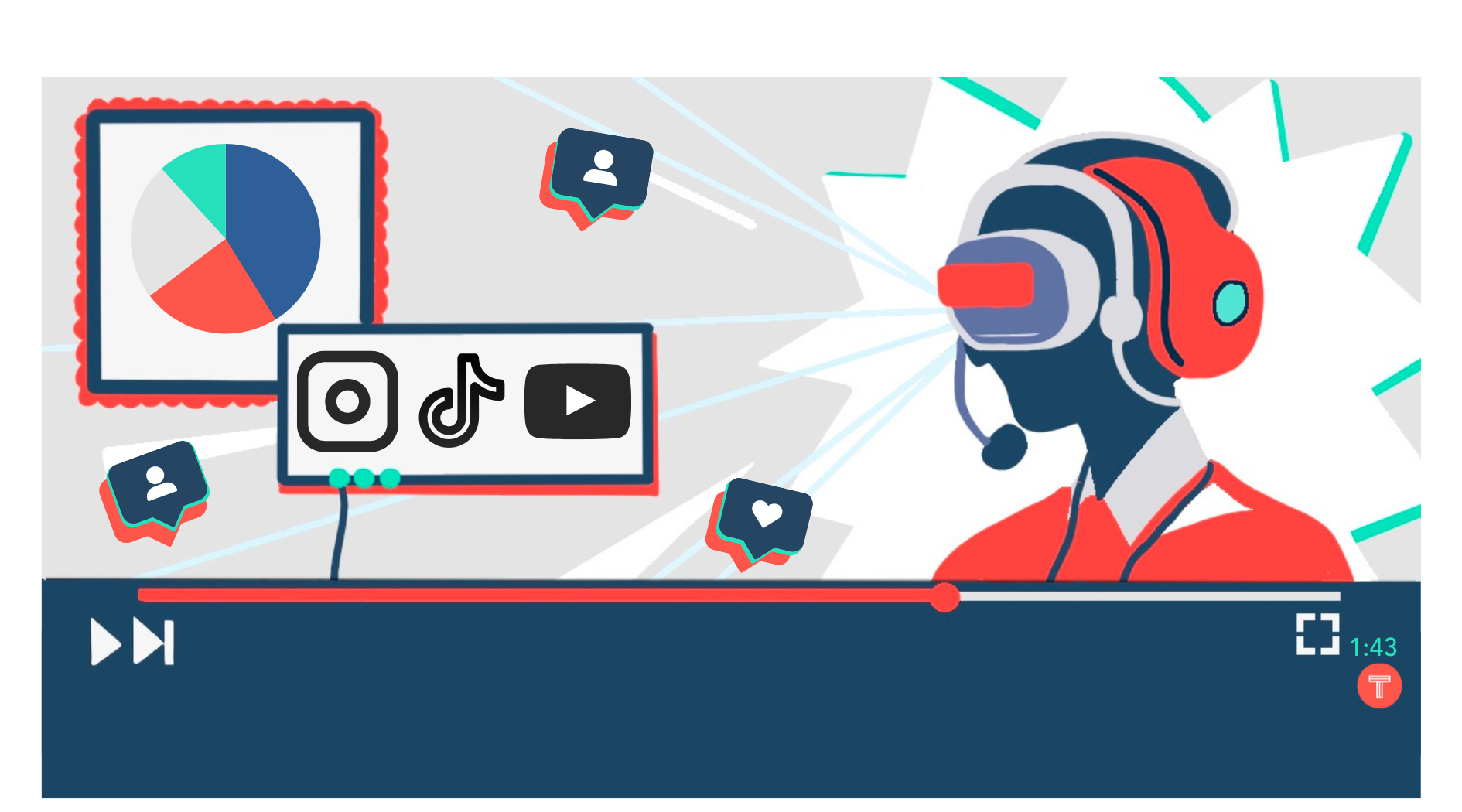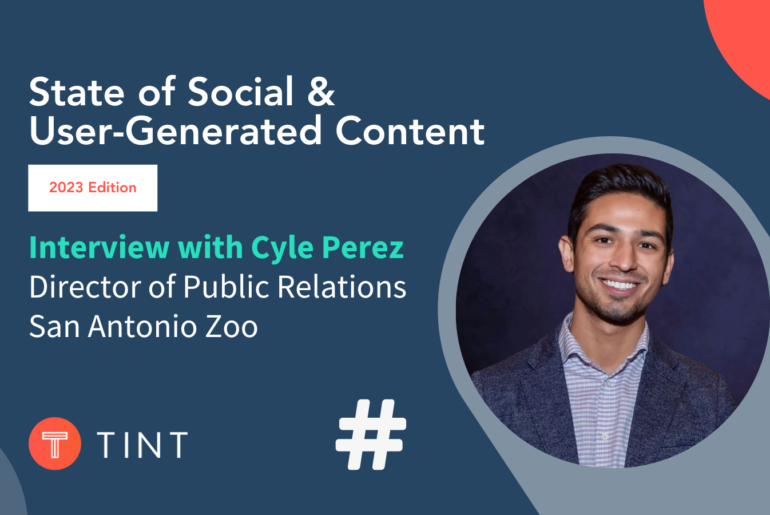Marketers are ramping up audio and video (A/V) content in 2023. This investment is a reaction to the evolving digital landscape, where capturing consumer attention and leaving a lasting impression is a changed game, one you can’t win without dynamic content.
In our 2023 State of Social & User-Generated Content Report, we found that 66% of consumers believe that brands that use audio and video stand out more than those that don’t. However, less than 20% of markers believe they have the team and resources to create high-quality A/V material. This blog explores why audio and video marketing is worth the investment and how marketers can fill this production gap with cost-effective, trustworthy, and scalable solutions.
🎥The Power of Video Content:
The dynamic elements of A/V content (such as music, sound effects, and motion graphics) convey information faster and more effectively than static images, keeping consumers more engaged. This increased engagement can lead to higher click-through rates, more time spent on a page, and better conversion rates.
Studies also show that videos yield better memory retention. Consider why airlines are now spending millions of dollars (yes, millions) on their passenger safety videos. Airlines could have maintained the old routine: a static voiceover echoes over the aircraft while a flight attendant performs an unenthusiastic demonstration with a few props. But the videos are undeniably more stimulating, which has increased the likelihood that a passenger remembers the safety instructions.
The elaborate demonstrations also serve as a meaningful opportunity for airlines to imprint their brand message (and even sell advertisements).
So, beyond attention and retention, video content allows for storytelling. When companies share their values, it can foster an emotional connection with viewers, ultimately increasing customer loyalty and retention.
Tip: A simple (and cheap) way companies can share their stories is by showcasing their employees and work culture on social media platforms like TikTok. When customers see the happy and engaged faces behind a brand, it fosters a sense of connection and trust. Overall, transparency on social media can work as a form of social proof, increasing customer loyalty. (It can also be an ineffective recruitment tool!).
🎬More Video Solutions:
The rise of A/V-friendly platforms like YouTube, TikTok, Instagram Reels, and even LinkedIn’s video feature makes video an increasingly accessible and essential channel for marketers. Besides Employee-Generated Content (EGC), here are some more tips for maximizing video material:
User-Generated Content (UGC): The Most Authentic Way to Market
- When consumers share their unpaid, authentic experience online, companies can get rights to that content and repurpose it! (P.S. TINT can help with this 😉)
- UGC fills in-person and online marketing channels at a lower cost than average campaign production. And it does all of this while getting even more engagement and conversions than brand-created content.
- There’s a reason that UGC is one of this blog’s favorite topics.
Creator and Influencer Content
- Did you know that there’s a difference between creator, influencer, and user-generated content?
- Employing or incentivizing creators and influencers to post video content can save marketers a lot of time while increasing engagement.
Repurpose and Cross-Pollinate Existing Content
- Get the biggest bang for your buck by repurposing video content and cross-pollinating it to other channels. From one video, you can extract short video clips for multiple social media platforms, audio for a podcast, and a transcript for a blog post!
🎧Audio is important too!
Although most marketers realize the worth of video marketing, a lot are mistakenly undervaluing the power of audio. But, since audio consumption is increasing, more marketers are seeing it as an esteemed asset.
Why Audio is So Great:
Starting off: it’s practical and widely accessible. To engage with video content, you need to stop what you’re doing and look at your screen. Audio blends seamlessly into our lives; we can listen on commutes, while cooking, cleaning, etc. About two-thirds of the US population ages 12+ tune in to digital audio at least once per week. That number will continue rising with the increasing flexibility and accessibility of audio.
Despite its low-maintenance, audio advertising has proven to be remarkably engaging and effective:
- 61% of audio listeners stay tuned through ads, while only 19% of TV viewers actively watch TV ads. (Audacy)
- Audio ads “drive 24% higher recall” and “are more than 2x as likely to lift purchase intent and information intent” compared to display ads. (Digiday)
The bottom line: Audio is booming, and it’s time for marketers to tap in if they aren’t already.
Insights:
Utilizing sonic branding, breaking into the podcast space, and capitalizing on TikTok trends are a few ways to amplify your marketing strategy.
🔊Sonic Branding:
A fundamental component of audio marketing is sonic branding, sometimes called audio branding, sound branding, or acoustic branding: the practice of using auditory elements to brand your product or service. Sounds create strong associations in our minds, making them a powerful memory trigger and a valuable weapon in any marketer’s arsenal.
In their A/V advertisements, Southwest Airlines typically incorporates the universal airplane ding that occurs several times during any flight.
When the familiar sound plays during their ad, a listener’s memories begin working, instantly adding a layer of engagement. The more and more they hear that ad, the more they associate the tone with Southwest. Then, if the listener gets on a competitor airline’s flight, they will hear that ding, triggering their subconscious to think of Southwest instead.
Other companies use audio logos in more obvious ways. Think about the branding of insurance companies like Nationwide or Liberty Mutual– we strongly associate them with their jingles. (Take a second to recall their iconic verses…see?) Or how about that one fast food company’s “ba-da-ba-baba”? Are you hungry now? Now that’s some effective McBranding, and we’re lovin’ it. This deep association shows why companies should consider incorporating sonic branding into their marketing plan.
🎙️Podcasts: A Novel Form of UGC
Like video, audio is another great place to display authenticity. We’ve said it a million times: consumers crave authentic content from reliable people, which is why podcasts are a unique space for advertising. When the voice of your favorite podcaster is telling you to buy a product, it feels like a personal recommendation from someone you trust, even if they are just regurgitating their sponsor’s script.
There is a lot more to love about podcasts, according to Basis Technologies:
- 86% of consumers recall ads on podcasts more than any other channel.
- 74% of consumers report visiting a company or product’s website as a result of hearing an ad on a podcast they listen to regularly.
- 65% say they’ve made a purchase and 54% say they’ve visited a store because of a podcast ad.
🎶Bonus: Trending Sounds
If you’re looking for a simple way to incorporate audio into your marketing strategy, get on TikTok and start using trending sounds. The familiar music will recast your message as more relevant to your audience thus, boosting your reach.
A TikTok study study found that if a brand features a song in their video that users like:
- 68% say they remember the brand better
- 62% say they’re more curious to learn about the brand.
Further, consumers are 96% more likely to remember brands that use music that aligns with their identity (Leicester University).
We discussed more about sonic branding on our podcast and our webinar with Eric Singer, Executive Producer at Coupe Studios Music and Sound Design.
📈7 Other Trends Shaping Marketing in 2023
Doubling down on audio and video content is only 1 out of 7 marketing themes we discovered in our research.
Download a free copy of the State of Social & User-Generated Content Report to see the seven themes defining marketing in 2023.




